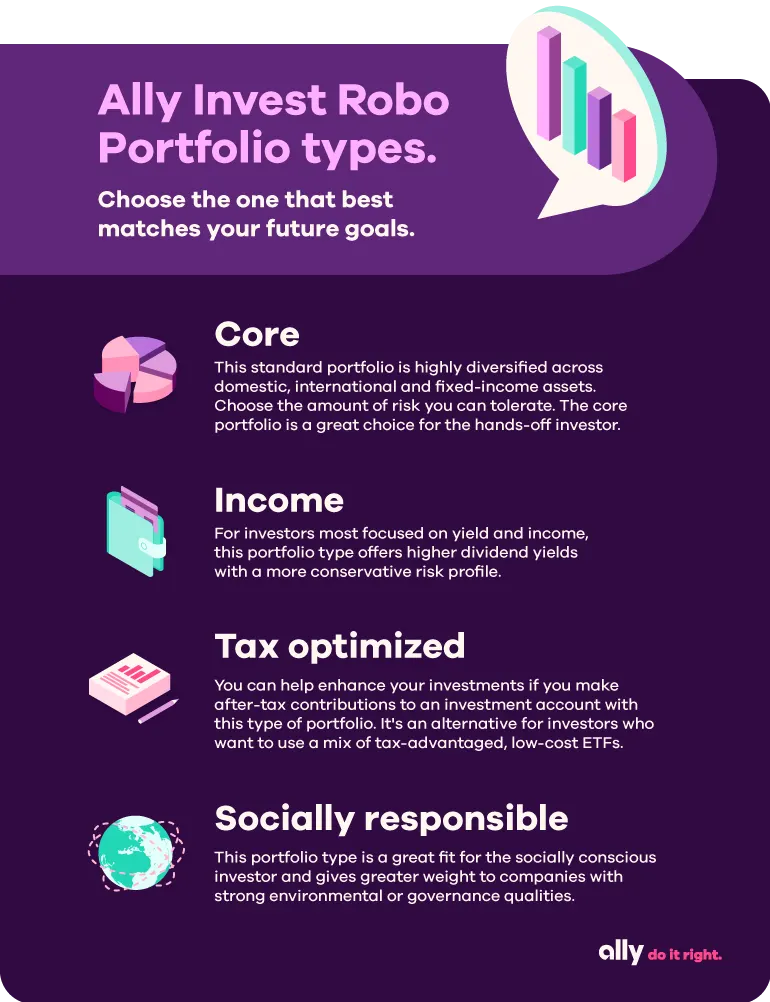Why shouldn't you put all your eggs in one basket? Well, if you dropped that basket, all your eggs would break. But divide them up into multiple baskets, and dropping one basket will still leave you with some eggs intact. That's the concept behind portfolio diversification — a critical investing strategy for risk management.
What does it mean to diversify your portfolio?
Diversification is an investing technique that involves allocating your investments across different types of asset classes, industries and geographies. That means investing in a mix of stocks, bonds, funds (like mutual funds and ETFs) and other assets in order to optimize your portfolio based on the level of risk you decide to take on.
Read more: Take the quiz to find out which investment accounts are right for you.
What is the importance of diversified investments?
Having a portfolio of diversified investments may limit your risk of loss while still maintaining a balance that aims to generate returns. It allows you to not be overly dependent on the success of one single company, industry, location or economy. When you’re diversified, you may be better equipped to weather the ups and downs of market volatility.
How does a diversified portfolio reduce risk?
Consider this scenario: You invest 10% of your portfolio in one stock and spread the other 90% across a mix of bonds and ETFs. If the company behind that stock fails, it’s possible that only a minor portion of your portfolio will be affected. But if 50% of your portfolio is invested in that company, you could experience significant loss if its stock plummets.
Diversification may also help balance losses during a bear market. Different types of asset classes, industries and more will react to the market in varying ways. For example, when the equities market is down, the bond market tends to rise. So, if you balance out your stocks with bonds, those bonds may act as a hedge to help keep your portfolio afloat even if major indices are experiencing a bear market.
Having a portfolio of diversified investments may limit your risk of loss while still maintaining a balance that aims to generate returns.
How can you diversify a portfolio?
1. Start with an understanding of your risk tolerance to help you decide on an appropriate asset allocation. For example, if you have a high risk tolerance, you may be able to initially invest more heavily in stocks than bonds. With a lower risk tolerance, you might consider a more conservative approach and your portfolio could be more heavily weighted with bonds and other fixed-income securities.
2. You’ll want to explore different types of investment vehicles, such as stocks, mutual funds and ETFs. Mutual funds and ETFs can be a smart way to enhance the diversification within your portfolio, since these investments are funds made up of numerous underlying securities. If you're a hands-on type of investor, an Ally Invest Self-Directed Trading account could be right for you.
3. Think about diversifying across industries and geographies, too. You could invest in an ETF, some corporate bonds and a stock or two that are all related to the tech sector — and while your assets are diversified, they could all be susceptible to volatility in that sector. Same goes for diversifying across locations. A mix of investments that span different geographical areas and countries can help spread your risk even further.
Learn more: With an Ally Invest Robo Portfolio, we'll build a diversified portfolio for you.
4 types of robo portfolios with Ally Invest
We offer four customized portfolio types to meet a variety of investor needs and preferences. Choose the portfolio that aligns with your time frame, risk tolerance and goals and we’ll handle the diversification.

Don’t wait to diversify
If you wouldn’t put all your precious, metaphorical eggs in one basket, you certainly don’t want to put your very real money into one investment or sector. By investing with an automatically diversified robo portfolio or selecting your own mix of different types of investments, an array of industries and varying geographies, you can build a stronger portfolio that’s better prepared to withstand a fluctuating market — or a klutzy basket holder.



